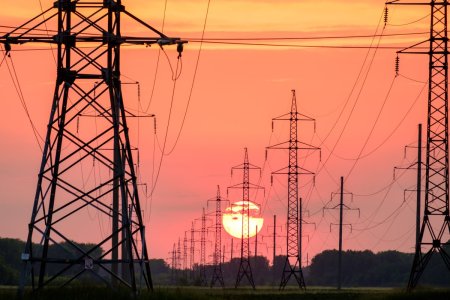Did your electricity bill hike up, too? 75 per cent of Australians are experiencing the same
If your latest electricity bill made your eyes water, you're not alone. A new report has found that a staggering 75 per cent of Australians have copped a hike in their power bills over the last few months.
Earlier this month, The Australian Energy Regulator (AER) released its ‘State of the Energy Market’ report for 2023 and warned that Australians could face rising power prices for years as the country struggles to switch to more sustainable and renewable energy sources.
This was later confirmed by a financial comparison website, Canstar Blue, as they reported that 75 per cent of households saw an increase in their electricity bills in the past few months.
They also revealed that 72 per cent have been reducing their electricity usage, but 52 per cent are still expecting to receive higher electricity bills.
As of July 1, AER increased the default market offer from 20.8 per cent to 23.9 per cent without controlled load and from 19.6 to 24.9 per cent with controlled load, depending on the region.
Canstar Blue explained that residents could save up to 30 per cent on their bills if they compare prices from different energy companies and see who offers the best deal.
For example, residents from Victoria using Covau Energy could see a 27 per cent savings in their annual bill compared to the state’s default officer.
Customers of Simply Energy in Victoria could save up to 26 per cent, while those with OVO Energy could see a 25 per cent savings.
Clare Savage, Chair of AER, mentioned the importance of finding ways for residents to use other energy sources like solar panels or small-scale batteries.
‘This will require effective whole-of-system integration, which would avoid more costly alternatives of additional grid and generation investment,’ she explained.
Low-income consumers have been facing the brunt of this issue. According to Canstar Blue’s report, electricity bills as a proportion of income are at least double those of average-income earners.
And it looks like it would persist for a while as it was reported that the temporary bill relief from the government ends.
Energy bills have risen from 9 to 20 per cent for all households—excluding Western Australia and the Northern Territory—covered by the National Electricity Market (NEM) in 2022-2023.
However, the ‘greatest challenge’ lies in the delivery of big transmission projects, which have been progressing more slowly than planned
Ms Savage said: ‘These projects face challenges including escalating costs, slower than planned progress and the need to address the concerns of the communities that host them.’
On the bright side, the impact of renewable generation and household solar continued to grow nationwide. The rooftop solar output has doubled in the last five years, accounting for nine per cent of total generation in 2022.
Based on the forecasts by the Australian Energy Market Operator (AEMO), residential rooftop solar capacity could supply up to 80 per cent of the energy demand in mainland NEM regions by 2025.
But Canstar Blue’s report warned that if no action is made to manage the energy resources, AEMO would struggle to deliver adequate system strength, inertia, voltage management and frequency control with the present operational tools.

What do you think of this story, members? Do you have tips that can help others to save on their energy bill? Let us know in the comments below!
Earlier this month, The Australian Energy Regulator (AER) released its ‘State of the Energy Market’ report for 2023 and warned that Australians could face rising power prices for years as the country struggles to switch to more sustainable and renewable energy sources.
This was later confirmed by a financial comparison website, Canstar Blue, as they reported that 75 per cent of households saw an increase in their electricity bills in the past few months.
They also revealed that 72 per cent have been reducing their electricity usage, but 52 per cent are still expecting to receive higher electricity bills.
As of July 1, AER increased the default market offer from 20.8 per cent to 23.9 per cent without controlled load and from 19.6 to 24.9 per cent with controlled load, depending on the region.
Canstar Blue explained that residents could save up to 30 per cent on their bills if they compare prices from different energy companies and see who offers the best deal.
For example, residents from Victoria using Covau Energy could see a 27 per cent savings in their annual bill compared to the state’s default officer.
Customers of Simply Energy in Victoria could save up to 26 per cent, while those with OVO Energy could see a 25 per cent savings.
Clare Savage, Chair of AER, mentioned the importance of finding ways for residents to use other energy sources like solar panels or small-scale batteries.
‘This will require effective whole-of-system integration, which would avoid more costly alternatives of additional grid and generation investment,’ she explained.
Low-income consumers have been facing the brunt of this issue. According to Canstar Blue’s report, electricity bills as a proportion of income are at least double those of average-income earners.
And it looks like it would persist for a while as it was reported that the temporary bill relief from the government ends.
Energy bills have risen from 9 to 20 per cent for all households—excluding Western Australia and the Northern Territory—covered by the National Electricity Market (NEM) in 2022-2023.
However, the ‘greatest challenge’ lies in the delivery of big transmission projects, which have been progressing more slowly than planned
Ms Savage said: ‘These projects face challenges including escalating costs, slower than planned progress and the need to address the concerns of the communities that host them.’
On the bright side, the impact of renewable generation and household solar continued to grow nationwide. The rooftop solar output has doubled in the last five years, accounting for nine per cent of total generation in 2022.
Based on the forecasts by the Australian Energy Market Operator (AEMO), residential rooftop solar capacity could supply up to 80 per cent of the energy demand in mainland NEM regions by 2025.
But Canstar Blue’s report warned that if no action is made to manage the energy resources, AEMO would struggle to deliver adequate system strength, inertia, voltage management and frequency control with the present operational tools.
Key Takeaways
- Around 75 per cent of Australians have experienced an increase in their electricity bill in the past few months, according to Canstar Blue.
- Despite 72 per cent of Australians significantly reducing their electricity usage, over half still expect to receive higher bills.
- It was found that households could save almost 30 per cent on electricity bills by shopping around for companies offering the best deals.
- The Australian Energy Market Operator forecasts residential rooftop solar capacity to supply
up to 80 per cent of the underlying customer demand in mainland National Electricity Market regions by 2025.
What do you think of this story, members? Do you have tips that can help others to save on their energy bill? Let us know in the comments below!








